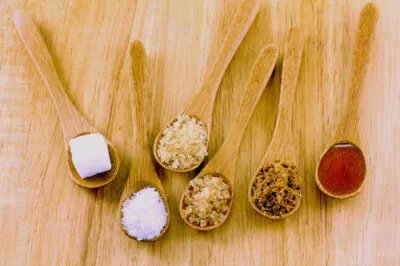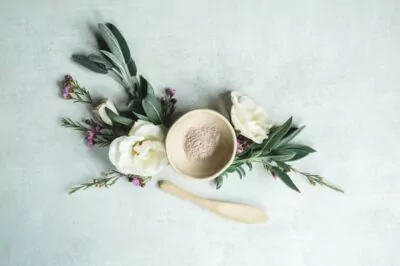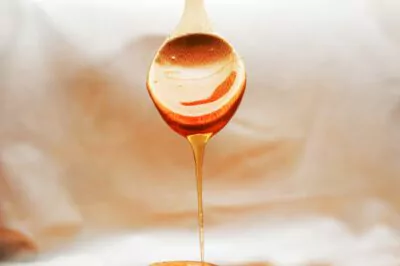In a food climate where eating dinner is a means of reaching dessert, where birthday milestones are celebrated with cake, and everything from our morning coffee to our pasta sauces are loaded with sweetness, it’s no wonder that so many of us find ourselves in search of the healthiest sweetener.
Health experts like Kris Carr will tell you that our nation is need of some serious sugar rehab. Our bodies don’t know what to do with all this junk we’re feeding them! And if you’ve ever made the conscious effort to cut sugar out of your diet, you will probably agree that this sweet tryst is nothing short of an addiction.
But what’s a guy or gal to do? You were assigned dessert for your work potluck. Your in-laws are visiting and cookies are the only thing you have in common. Or maybe you just feel like life is too short to cut out sweets entirely. Looks like we are going to have to find a way to make sugar work for us.
We can’t give you a handy list of the best and worst sweeteners, because it’s not really that clear cut. Each sweetener has its pros and cons, so it’s up to you to decide which is allowed in your kitchen! Here is what we gathered on some popular, natural sweeteners.
Glycemic Index
The glycemic index measures how much a given carbohydrate raises your blood sugar. High glycemic index foods cause your blood sugar to spike and don’t keep you full for very long. Low glycemic index foods, on the other hand, help control your appetite and don’t have the same blood sugar spiking effects. Sugar is sugar, but certain sweeteners give you less of that jolt. For people watching their weight or concerned about diabetes, glycemic index is probably the first thing you want to look at when choosing a sweetener.
Glycemic Index Load:
HIGH: 20+
MEDIUM: 10-19
LOW: Less than 10
How your natural sweeteners rank:
Yacón syrup or powder: 1-5 (depending on the source)
Brown Rice Syrup: 25
Agave: 30
Coconut Palm Sugar: 35
Dates: 38 (though it varies between species)
Maple Syrup: 54
Blackstrap Molasses: 54
Honey: 55
Raw Cane Sugar: 65
So you can see that there is a quite a range in glycemic index ratings for common sweeteners, though most all fall under the “high” category. If blood sugar is your main concern, glycemic index should be the first thing you consider about a sweetener. But there are other qualities that distinguish one sweetener from another. Let’s see what these sweet things have to boast (or hide their heads in shame) about:
Agave
Not to talk smack, but agave is higher in fructose than high fructose corn syrup. What’s bad about fructose? It’s linked with insulin resistance and increased triglyceride levels.
Agave was and is still heralded by many health enthusiasts for its relatively low glycemic index rating, but it has fallen out of good graces for others due to its high fructose content and the fact that it is generally highly processed.
What’s good about agave? It is said to have prebiotic effects, meaning it supports the growth of beneficial bacteria. This is because the main carbohydrate in agave is inulin. Consequently, the processing of agave removes a lot of the inulin, so the extent of the benefits are questionable unless you have your own agave plant.
Brown Rice Syrup
I never imagined myself pouring something made from brown rice onto something else in order to make it taste good. Fifteen years old me would be so confused. But here we are!
Brown rice syrup is indeed sweet. It’s made by adding enzymes to cooked rice, which breaks down the starches. The liquid is then strained out and then cooked to reduce down to the desired consistency. Syrups like brown rice syrup are great to cook with. Brown rice syrup also contains trace amounts of vitamins and minerals, so that’s something to feel good about.
Blackstrap Molasses
Leftover from the processing of sugar, blackstrap molasses is another choice you have when you’re trying to make your world a little sweeter. Make sure to buy organic, fair trade versions!
What’s good about blackstrap molasses? It’s rich in calcium, potassium, and iron, magnesium, and manganese! An exclamation point was definitely necessary there. If you are going to sweeten something anyway, you might as well use something nourishing.
Currently, much of the molasses grown is used as animal feed, with the refined sugar the part that actually makes it to our grocery stores. As people start to discover the health properties of blackstrap molasses, we will hopefully see it around more.
Honey
The one you’ve all been waiting for!
Honey, like agave, is high in fructose. Before you give up and go home, know that honey has many redeeming qualities! For one, it contains oligosccharrides, a type of complex sugar that feed your gut flora.
Though its nutrient content is overall pretty low, honey does contain trace minerals; and the darker the honey, the more minerals it contains. Pasteurized and ultra-filtered honey that you often see on grocery store shelves has very little nutritional value. You can spot this honey because it has a rich golden color and stays liquid at room temperature. Look for raw honey that’s solid at room temperature and unfiltered.
Honey also has some bragging rights in the phytochemical department. Carotenoids, phytosterols, phenolics, peptides… They’re all there!
Should I make a bee joke? Maybee next time.
Yacón
Native to the Andes, yacón is a root worth digging up. It’s produced mostly in Peru now, and processed into a powder or juice. Like agave, it contains inulin, which acts as a prebiotic. However, it is considerably less sweet than agave.
Yacón has grown very popular due to its reported ability to aid weight loss. Whereas a tablespoon of “table sugar” has 48 calories, two tablespoons of yacón has only 40!
Besides being lower in calories (who’s counting?), this root powder or syrup is said to improve intestinal health, lower glucose, improve insulin sensitivity, support the immune system, and might even reduce cholesterol levels! Your healthiest friend already knows, yacón is the way to go!
Maple Syrup
Maple syrup is high in fructose, similarly to agave and honey. As far as nutrient content, maple syrup provides more minerals than honey, making it another good choice if flavor is a big concern for you. The flavor profile of maple syrup is pretty fantastic (objective fact and certainly not a biased opinion of this writer).
It’s not low calorie or low glycemic, but it’s easy to use in dishes where you want a smooth consistency and lovely flavor. It’s surely a better option than refined sugar.
Coconut Palm Sugar
High in potassium with trace amounts of other vitamins and minerals, coconut palm sugar is another candidate for your next batch of cookies.
At 35, it’s not terribly high on the glycemic index scale and thus definitely a better option than refined sugar. Just make sure what you are buying is 100% pure coconut palm sugar, as some products will market themselves with the popular coconut, but are actually blended with fillers. Also, this is one of those items where sourcing is of particular concern. Make sure your coconut palm sugar is Fair Trade, and produced with the interest of the environment in mind!
Dates
Who would of thought a fruit so sweet could come from nature? Enter, dates.
The result of the beautiful date palm, dates are high in potassium and come with a dose of fiber. Each date contains 23 calories, so be conscious when you snack.
Dates are often used in baking because they sweeten while helping things stick together. They’re also great to throw in a smoothie. You can even blend up dates with water to create a kind of date “syrup,” though it won’t dissolve exceptionally well in coffee and tea.
Of course, one of the best things about using dates to sweeten your food is that it’s just fruit, and therefore isn’t processed. The functionality of using them is probably what holds some people back.
There are a lot of choices out there for us dessert-loving folk. There isn’t one right answer, but there are definitely some health benefits and drawbacks to consider when picking a sweetener. The fun part is doing the research to determine which one is right for you!
Do you have a favorite sweetener I didn’t mention? I’d love to hear about it!
by Hope Freije
Sources:
http://lpi.oregonstate.edu/infocenter/foods/grains/gigl.html
Are There Any Good Natural Sweeteners? : Renegade Health Exclusive Article
http://www.rodalenews.com/sweeteners
All About Honey: Raw, Wild, Manuka…What Kind is Best for Health?
Paleo Sweeteners: 3 Alternatives to Toxic Sugar and High Fructose Syrups








I have had raw honey all my life and have never seen it turn solid at room temperature. It crystallizes sometimes but it doesn’t simply turn solid at room temp and then liquid again. To dissolve the crystals you must heat the jar of honey in a hot water bath being careful not to heat it too much and destroy the nutrients. My family has always loved when the honey crystallizes and we spoon it and eat it like candy. If there is too much we simply use it in hot oatmeal, tea, etc and it dissolves. It’s usually an inch at the most in the bottom of a mason jar that crystallizes.
We use Swerve and Erythritol and find them more paletable than Stevia.
Stevia? Thanks for this article – I didn’t know about Yacon.